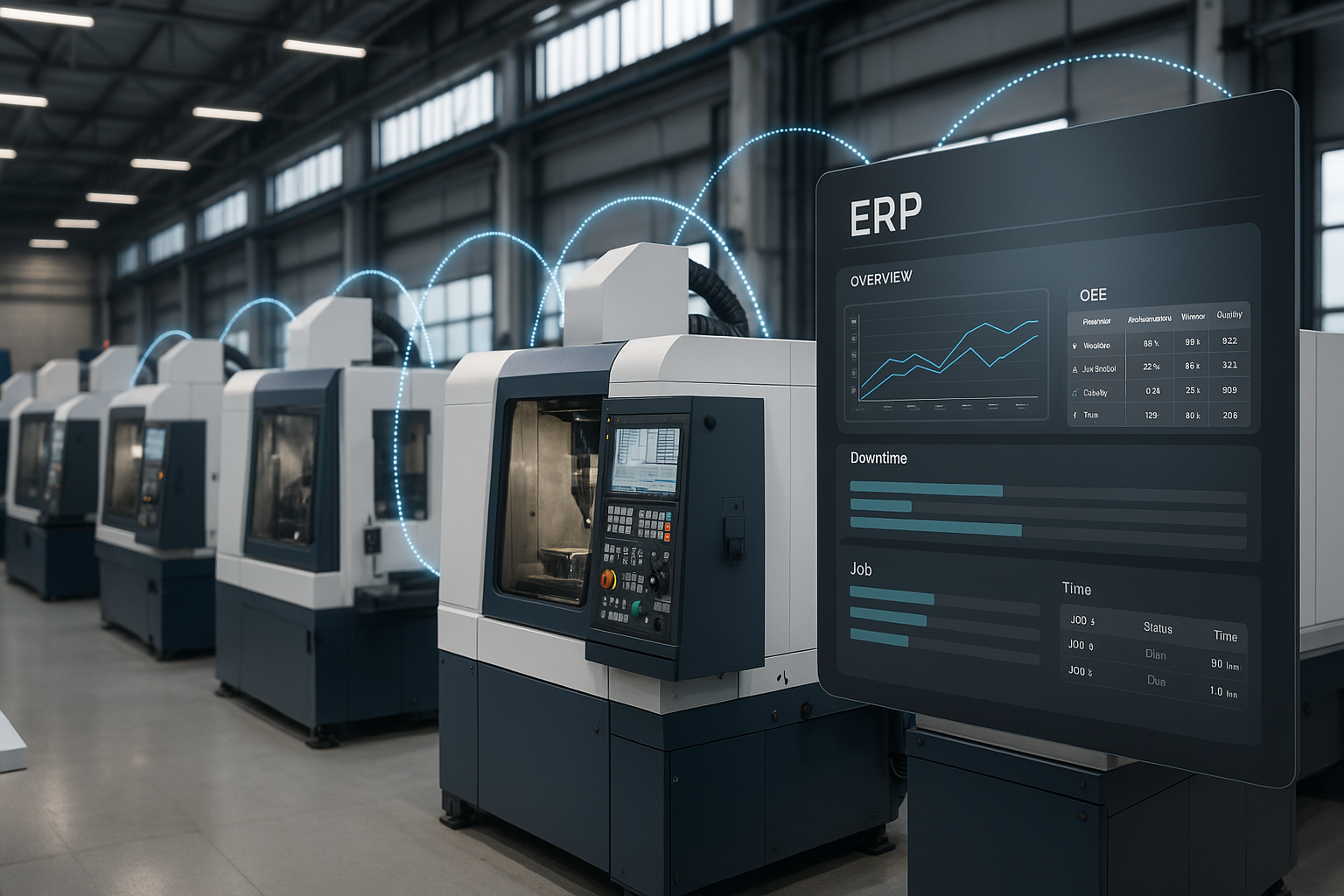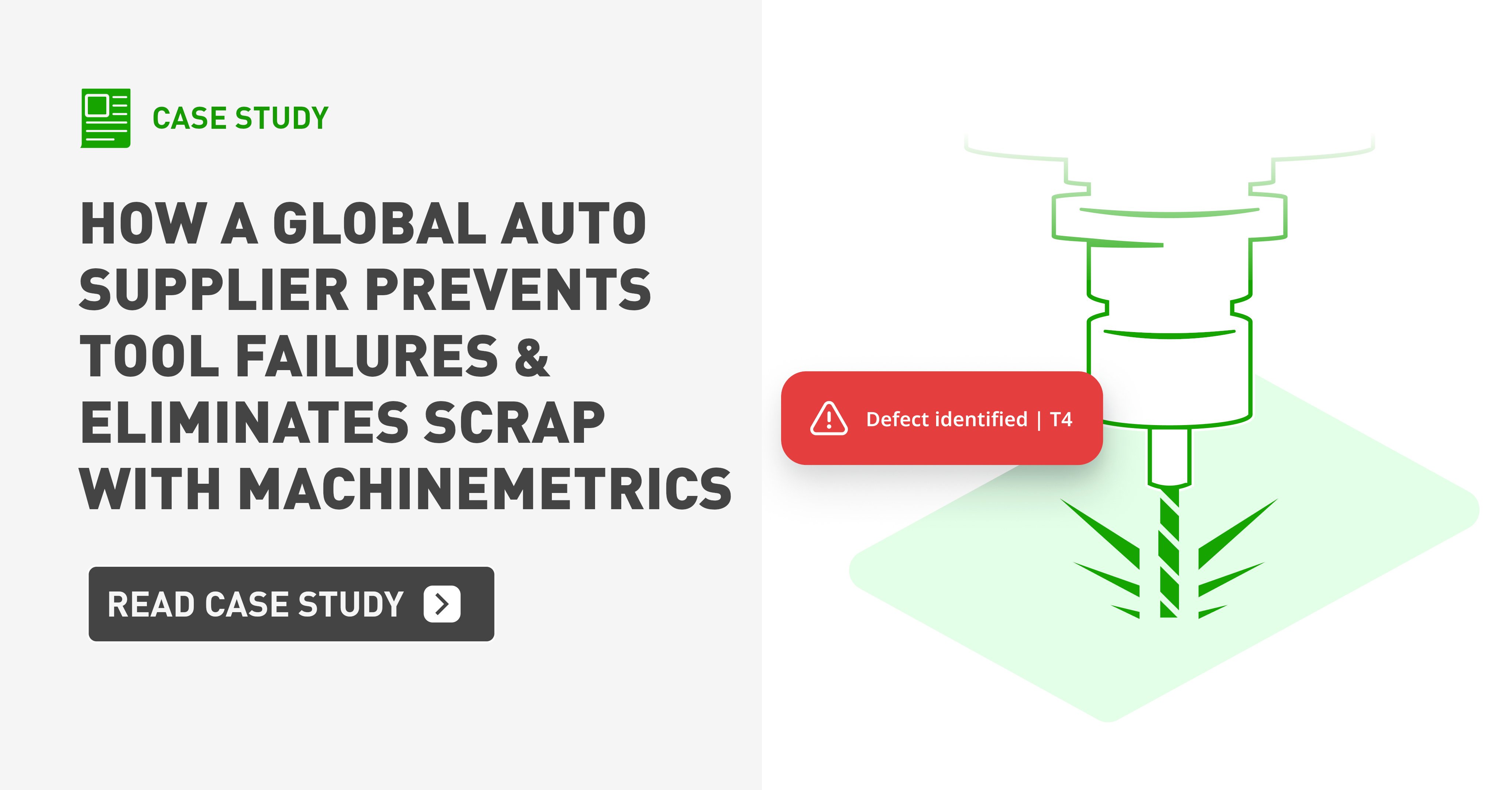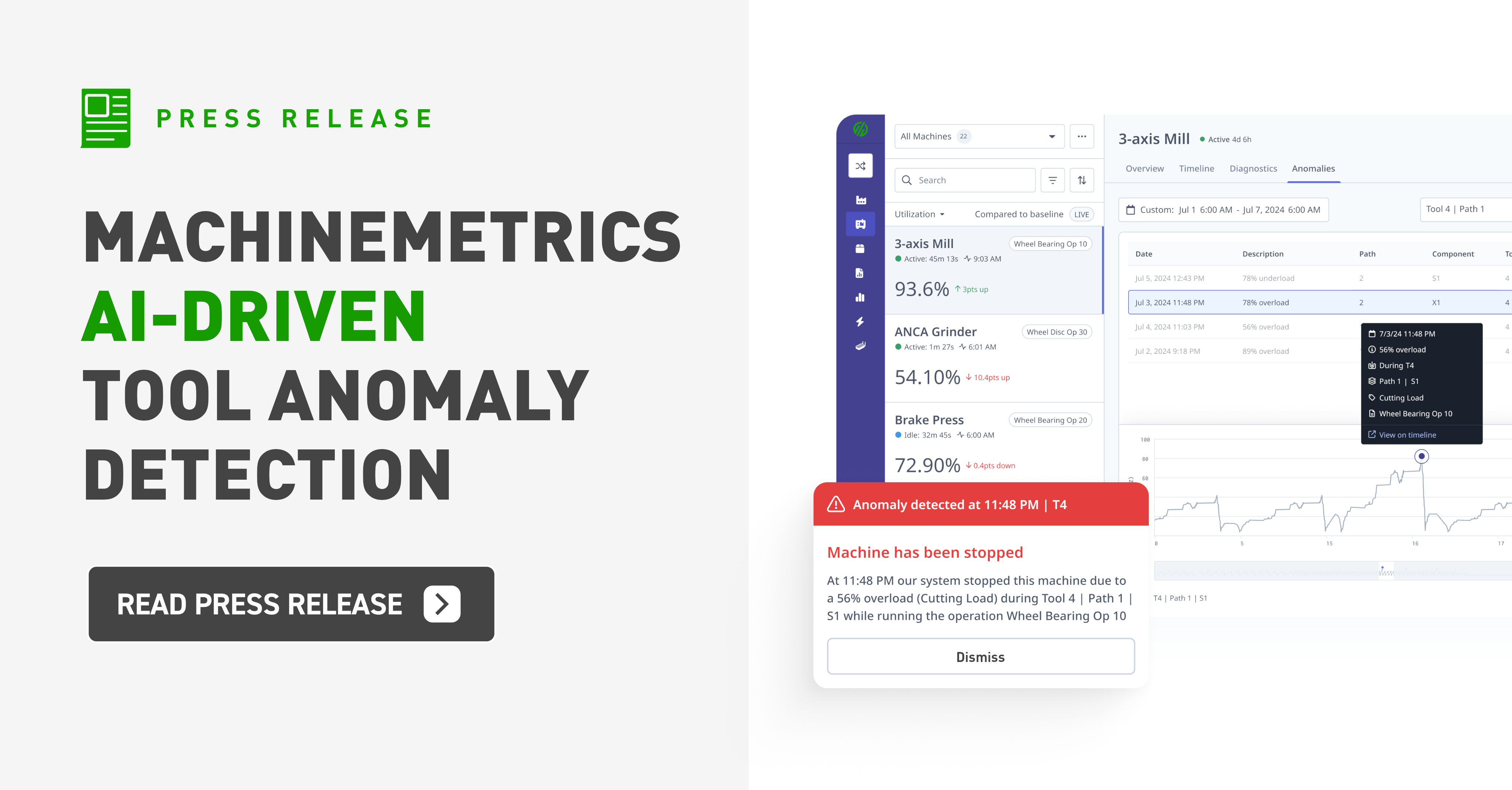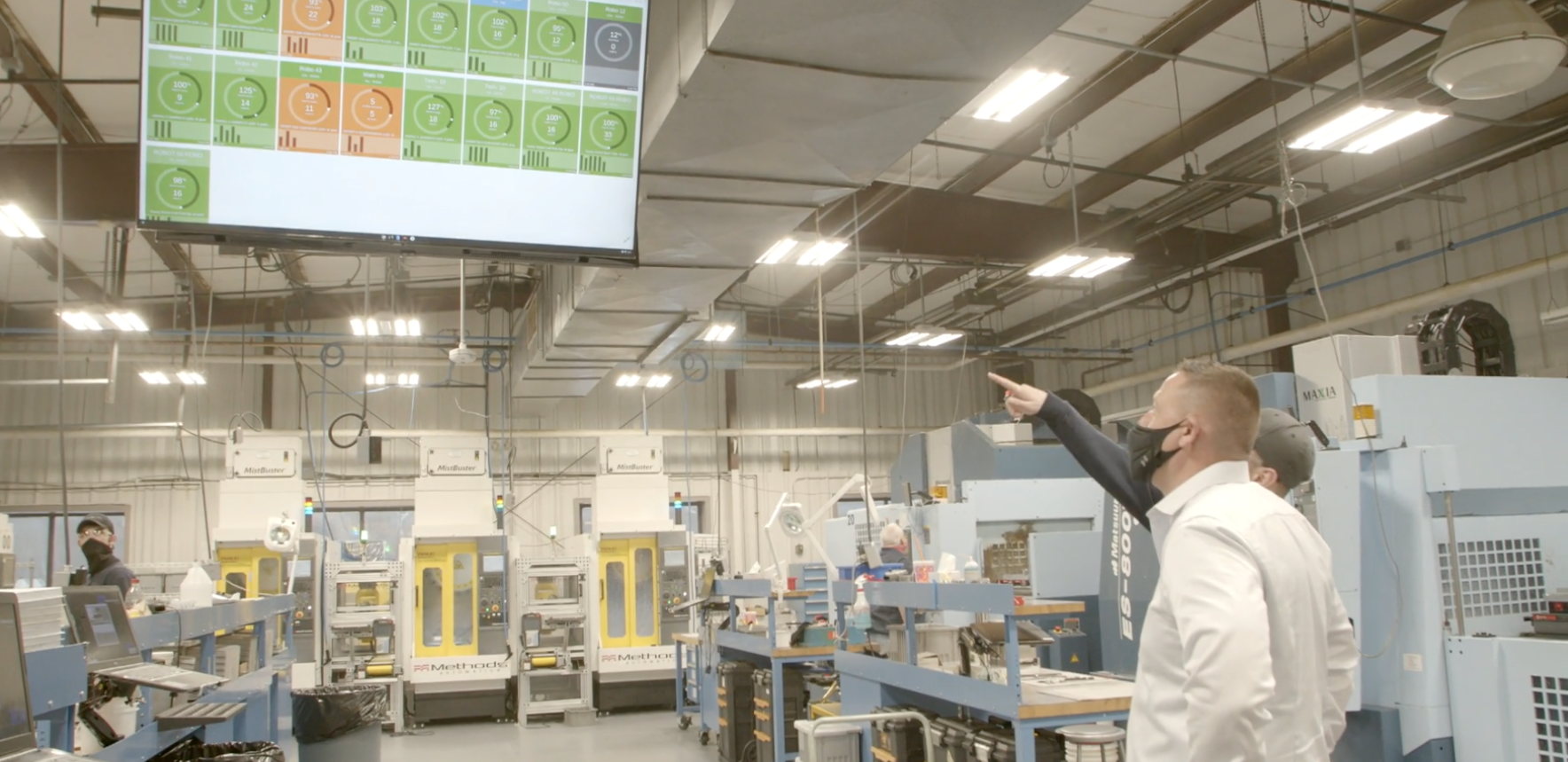Advanced manufacturing technology and the global digitization of processes are transforming how we do business. Every year, new and exciting solutions are introduced to create more value within industries like manufacturing.
The technologies driving Industry 4.0 and the digital revolution are being applied to manufacturing rapidly. The cumulative result of these technologies is referred to as advanced manufacturing. Below, we’ll explore this concept in more detail and review how these advanced technologies can give manufacturers an advantage.
What is Advanced Manufacturing?
Advanced manufacturing uses technology to revolutionize the way products are made to create more agile manufacturing systems. It drives innovation and creativity in product design, production, and distribution, creating more value for customers.
These new techniques create an ecosystem where automation, AI-driven analytics, and advanced machine learning algorithms drive value and process improvement.
The Difference Between Manufacturing and Advanced Manufacturing
The critical difference between traditional and advanced manufacturing is machine data.
Manufacturing has always sought to automate. But the production process was still controlled by manual data collection and analysis. Planning, inventory, production control, and quality all relied on some degree of mechanical automation.
But there was a missing piece of the puzzle.
The inability to gain complete visibility and control vast amounts of data meant there were limitations on process improvement. The data that was collected was siloed between departments and other facilities. And when it was processed and analyzed, it was often filled with errors and subject to human bias.
The technologies utilized in advanced manufacturing all rely on the same source – machine data. Machine data, collected in real time and analyzed by robust cloud-based systems, provides deep and actionable insights that can be leveraged to improve business processes.
These technologies can be linked via software and APIs to make the same data stream available to all and create an ecosystem of innovative capabilities.
The Benefits of Using Advanced Manufacturing Technology
The capabilities of advanced manufacturing technology have several key benefits, including:
Fast and Permanent Gains in Efficiency
When process optimization is driven by machine data and linked across the manufacturing floor, it’s easier to design and execute. As employees and managers access real-time information in multiple iterations and reports, data-driven insights lead the way.
Process improvements aren’t limited to workflow optimization or motion. Advanced manufacturing enables automation, reducing manual labor and allowing workers to focus on value-added tasks.
Improved Quality
Advanced technology relieves much of traditional manufacturing’s inspection-based focus. The use of optical scanning can identify defects at a faster pace than human inspection. This data is available to systems that manage and control automated settings; these systems can then adjust the machine or spindle accordingly to reduce scrap.
Faster Development
Systems designed for computer simulation and digital twin technology remove an expensive layer from new product iteration and help improve existing products. New designs can be simulated throughout a virtual lifecycle to identify improvement opportunities before moving to the production floor.
Traditional manufacturing relied on expensive multiple physical iterations. This change improves production processes, lowers R&D costs, and drives customer satisfaction.
Reduced Downtime
Downtime is critical in both traditional and advanced manufacturing. But in advanced manufacturing, downtime categorization, cause, analysis, and mitigation can occur in real time.
Managers can review downtime analysis in a machine data platform to uncover hidden trends that lead to process improvement and optimization. Decisions can be made in real time, and the improvement results can be detected immediately.
Advanced Maintenance Strategies
Highly accurate condition monitoring systems empower maintenance teams across the shop floor. Advanced manufacturing has created an opportunity to move from a preventive to a predictive maintenance format.
Precise machine health monitoring allows maintenance managers to deploy improved and timely service plans. The ability to read high-frequency data at the machine level drives the replacement of tools and parts before they impact production.
Driving a Digital Transformation with Advanced Manufacturing Technology
Factories of days past were very static environments. You had the building, the equipment, the workers, and the quota. Punch the timecard, meet the day’s quota, and head home for dinner. While revolutionary in their time, this type of factory fares poorly in modern culture with constantly fluctuating demands, an expectation of speed, and fierce competition and collaboration alike. Things move faster now—information, goods, machinery. Everything.
Traditional manufacturers implement advanced manufacturing technology in order to stay agile. It provides them with versatility, the ability to flex and bend to market demands, and more effectively and efficiently utilize their resources. This strategy reduces risk—a rigid company could fall apart in the face of crisis or reduced demand, whereas an advanced manufacturer can adapt to whatever the world throws at them.
Which technologies are these advanced manufacturers using that gives them such an advantage? While there are many, below are three important pieces of the equation.
Machine Learning
Machine learning benefits advanced manufacturers at basically every level of business, from demand forecasting to operations to production to maintenance and everything in between.
Machine learning analyzes data to find patterns that it then learns from and contextualizes.
It can accurately predict expected demand in order to set production goals, boost the efficiency of machine utilization, analyze machine data to determine when parts are going to break before a human operator is able to notice, and more. Machine learning, a subset of artificial intelligence, has become a staple of any truly competitive, data-driven advanced manufacturer.
Edge Computing
Edge computing helps resolve the issue of having far too much data to reliably and time-efficiently transfer to a data center for analysis. By deploying devices at the “edge” of a system that can offer some degree of filtering and computing before sending the relevant information to the cloud for further analysis, manufacturers are able to achieve faster response times, especially in facilities that use many industrial IoT devices.
Edge computing also makes the technology used in smart factories scalable. Even with massive data throughput, edge devices offer unprecedented scalability, allowing for edge analytics use cases.
This technology is used for a variety of manufacturing use cases including condition-based monitoring, predictive maintenance, precision monitoring and control, virtual reality in production facilities, and Manufacturing-as-a-Service.
High-Frequency Data Collection
Traditional—if you can call it that—IoT sensors collect data, but at a speed that doesn’t always show the whole picture when it's time for analysis.
“Imagine you’re trying to learn a new tune on the piano, but the sheet music only has one note out of every ten. Wouldn’t that be pretty hard?
That’s what it’s like learning what your machine is doing with data that only plays a few notes from the entire piece.” – Lou Zhang, MachineMetrics
High-frequency data adapters, however, allow for a data capture rate of 1000 points per second (1 kHz). With this level of granularity, data can show far more predictable trends, especially when paired with machine learning technology.
Unlike traditional IoT sensors, this sensorless data device can withstand hostile manufacturing environments such as those involving caustic chemicals or flying debris. Whereas a sensor may need to be recalibrated due to variables present in most any manufacturing environment, this type of high frequency data adapter utilizes information directly from the machine’s computer and is not subject to the need for calibration, replacement, or voiding the warranty of expensive manufacturing equipment. This alternative is scalable, reliable, accurate, and cost effective, whereas old-school IoT sensors are none of the above.
The MachineMetrics High Frequency Data Adapter is simple to DIY install and utilizes edge computing devices and, when relevant, machine learning to derive the most meaning from your most important data. This scalable solution can be deployed on dozens of pieces of equipment that all utilize only one edge device. This technology stack enables predictive maintenance, tooling optimization, diagnostics, and quality optimization in one affordable solution. The full MachineMetrics industrial IoT platform offers boosts to process optimization and production monitoring. Want to see how it could work for you? Book a demo.


.png?width=1960&height=1300&name=01_comp_Downtime-%26-Quality_laptop%20(1).png)






Comments